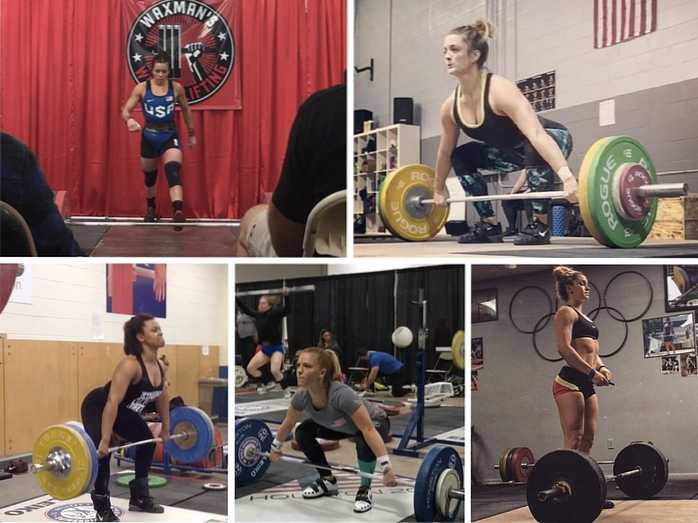
7 Intermediate Bodyweight Exercises You Need to Try

Odds are you've read dozens of bodyweight exercise articles, and most of them seem to just recycle the same tips. Some push-ups, a couple of pull-ups, and maybe a one-legged squat here and there but nothing on how to take your bodyweight routine to the next level, toward an intermediate regimen. The fact is there's only so much you can do with just your body before it all gets repetitive.
You can do push ups and planks all day long, but if you're an intermediate lifter with a poorly equipped home gym what you really need are moves that can challenge you and help you make gains in and out of the gym. That's not always an easy task. Luckily, I'm here to give you a list of intermediate bodyweight exercises to spice up your routine.
With these moves, you're mostly using your bodyweight with the assistance of little to no weight or a resistance band. You can find the equipment for this easily on Amazon or your favorite sports store (most of which are designated essential businesses).
These moves may seem simple, but give them a shot and you'll quickly be humbled. All are meant to challenge you in a different way and have your muscles quivering by the end of your workout.
Be sure to follow the tips for proper body placement on each move and take not at the speed each one should be performed at - some of these require slow, focused movements to make them worthwhile. Don't rush through the pain.
You can also watch each of the videos for hints and tips on how to properly perform the intermediate bodyweight exercises. With all that said, let's do this.
Lee Boyce is a personal trainer, speaker, fitness writer, and college professor based in Toronto, Canada. He is the owner and operator of leeboycetraining.com and works with clients and athletes for strength, conditioning, and sport performance. With a background as a varsity level sprinter and long jumper in university amid his kinesiology studies, he now brings plenty of that experience and anecdote to the lectures and workshops he delivers around North America to help make trainers and fitness professionals more effective at their jobs. Follow him on all social media @coachleeboyce .

The Intermediate Lifter's Workout Program
Take the next step toward your fitness goals with this plan.
Read article1 of 7
Plate Transfer Plank
Spicing up your plank by removing a base of support can be a game changer for core training. Remember - one of the key roles of the trunk is to resist unwanted rotation to protect the spine. Setting up light plates or other weighted objects to one side of your elbows and then forcing the opposing arm to reach across to stack those objects to the other side will demand a whole lot of your trunk. The goal here is to avoid twisting or leaning to either side - keep the hips square. Easier said than done. As you can see in the video, it's OK to move at a rather quick pace. Stacking all of the pieces to one side and back counts as one “rep”. Focusing on 3 “reps” per set is ideal.
2 of 7
Floor Blackburns
This presents a very honest challenge for anyone's mobility - especially big lifters. The goal is simple: keep the weights off the floor. You must keep your head in contact with the mat and the rest of your body down. This will provide real testimony to the functional strength of your rear deltoids, lower traps, and postural musculature as a whole.
It's much more difficult than it looks, and it will humble many. See how heavy you can go for 12 clean reps using the technique shown in the video. For reference, I'm using 8 pound dumbbells. If the weights or arms touch the floor, that means you've eased up too much. Long story short, you need to stay off the ground and aim for a full extension and flexion of the arms on each rep. Don't rush, either.
3 of 7
Duck Lunges
Keeping with the quad theme, this simple modification to lunges is guaranteed to torch them.
There's a lot going on here. First, these differ from the classic short-stride lunges due to the fact that the knee of the trailing leg gets the chance to travel outward. That seems like a minor detail but it isn't.
Keeping the knees in line during a typical short-stride lunge usually tends to cause the torso to lean forward and close the hip joint on each stride. Allowing for the knee to travel out like I am here eliminates this and allows the torso to remain vertical. That allows the shin to achieve a greater angle and the quads to work through a fuller range of motion.
Beyond this, I find a reduced level of knee stress despite the great dorsiflexion you can achieve to really hammer the quads, which is always welcome.
It's a simple way to make a pair of light dumbbells feel heavy. And if you're really feeling like a rockstar, then double dip.
4 of 7
Back Plank
We talk about planks for the anterior chain often, but we may sometimes neglect the posterior.
I like programming back planks to blast the postural muscles, rear deltoids, and intrinsic neck muscles. It's an extremely humbling movement that can exploit plenty of weakness you didn't think you had. Sets of 15 second bodyweight holds is usually plenty if you're new to the movement. Clench your fists and keep them facing the roof. Keep the chin up, and keep the body up. Don't fall below “sea level”.
Progress this exercise by increasing the lever arm first, before adding load. That's a fancy way to say, simply move the benches or platforms further away from one another to make things harder.
5 of 7
Dragon Flag Variations
True dragon flags can be too stressful, if not impossible for heavy, muscular lifters who may still have strong cores. Taking things to an accessible place can be the name of the game, and I've found this straddle negative to be a great modification to dragon flags that creates an ample challenge by making the eccentric-only variation much harder. The straddle negative creates an honest demand for the core, while still giving a lifter the chance to reset and tuck the knees on the way back up.
If you've got long or heavy legs, this can be your new go-to, brutal flag variation. Focusing on 5 second negatives for sets of 5-6 reps is more than enough to leave your abs brutalized for the balance of the week.
One more version of the dragon flag worth trying is this march drill. This dragon flag progression is another great option for big or heavy guys, since a part of the load gets a turn to move closer toward the fulcrum (with each “stride” you take in the March pattern).
This makes the movement more possible while strengthening the abs, obliques, lumbar region and even intercostal muscles to stabilize the body in the flag position. One coaching cue in BOTH variations that's important to remember is not to leave the glutes out so as to give the lower back zero assistance. Intentionally contract the glutes, to maintain a straight a line as possible from shoulders to heels. This movement doesn't work as well if your body is “folded” at the waist.
6 of 7
Resisted Scapular Slide
One of the basic exercises that people are taught to practice for improved shoulder rotation, upper-back activation, scapular mobility, and anterior muscle release as a by-product is the standard scapular wall slide. To do them, a lifter would simply stand with the heels, butt, upper back, shoulders and full arms and hands against the wall, reduce the lower back arch, and slide the hands up and down, mimicking a full shoulder press movement pattern.
The problem is that people adapt quickly to an unloaded mobility drill, and because of this, the wall slide can become another non-transferrable “skill” that doesn't carry over to generally improved posture or performance. Moreover, depending on whether the upper arm is properly nested in its socket to begin with, the wall slides themselves may always pose a problem from a biomechanical perspective. To help this cause, adding some mild resistance can “remind” the muscles of the rotator cuff to center the humeral head in the socket and create a much more effective set position. Plus, using a neutral grip via ropes (as compared to a palms-forward grip) creates a much more ideal (and shoulder-friendly) environment for external rotation that can act to counter anterior shoulder glide.
For resisted scapular slides, I like using a cable pulley, and performing the lift from a seated position. It's a bit easier for a lifter to focus on avoiding back hyperextension, which is a common compensation pattern when lifters have limited shoulder mobility.
This movement creates a force angle that works against the standard slide pattern, so keeping the hands and arms moving along the same plane becomes a much more challenging task for the scapular muscles. It's easy to “let up” and allow the hands and arms to drift forward. Focusing on sets of 12-15 reps using extremely light weight can be key. And if you're in a poorly equipped gym with no cables, simply use a band to get the same results.
7 of 7
Spanish Squats
One would think that Spanish squats are a way to attack the glutes and hamstrings even harder than normal due to the fact that the shin gets a chance to stay vertical (typically, more knee-over-toe = more quad activation). But the reason why these blast the quadriceps is due to two things:
- The tension of the bands pulls the lifter toward the machine. In resisting this force, the lifter will naturally place more of his weight toward the front of the foot. This small change makes for much more quadriceps involvement compared to standard squats.
- You can get further down into a deeper squat with this vertical shin than you would without the bands. That equals more knee flexion (a deeper bend), making for more work from the quads to get back out of the hole.
- If you look close, the legs and hips don't fully extend. It actually doesn't serve any great purpose for them to do so, which makes for a more constant tension under load.
- On the concentric rep, the knees have to push back against the band as best they can for something of a terminal knee extension. That will really make the quads - the VMO especially - work very hard.
I recommend them after a heavier loaded lower body movement too, so that you can go into them slightly fatigued. You can do them fresh, but the fact that there will be a ceiling on how much weight you can carry in your hands to load the movement itself may frustrate your ability to get a proper stim or breakdown.



Nimeni nu a comentat acest articol încă.